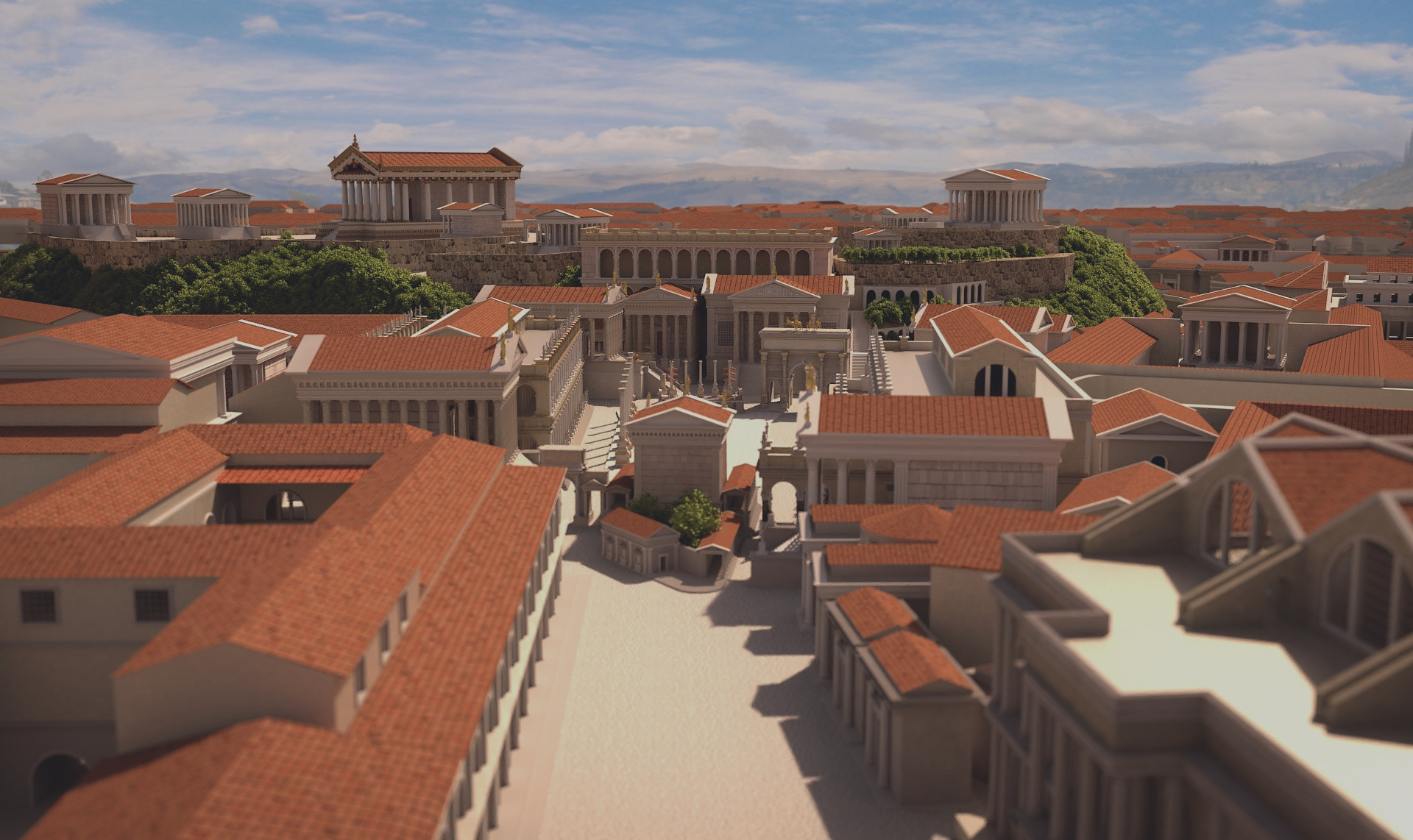Temple of Caesar
The pile of bricks that we can see today is what remains of the base of the great temple, the majesty of which can only be imagined. The wall still preserved contains an exedra, and often, especially around March 15, bouquets of fresh flowers can be seen: the Romans honour their most famous general. Precisely in this point, where now the altar stands, Caesar’s body was cremated. In reality it was prohibited to burn corpses in the pomerium, the sacred boundary of the city, so the pyre was prepared, as usual, in the Campo Marzio. However, the emotion aroused by the vision of the corpse of Caesar battered by twenty-three stab wounds, and the reading of his will by Antonio, and in particular the part where Caesar had arranged a bequest to each Roman citizen (three hundred sesterces apiece!) caused such a commotion that the body was taken by force and cremated in the Forum. In that place was then erected the altar that still can be seen, and behind it the great temple which has now disappeared. Soon after the funeral a star appeared in the sky. This was interpreted as a sign of the transformation of Caesar into a god. It was the first time that a divine origin was tribute to a Roman citizen.






